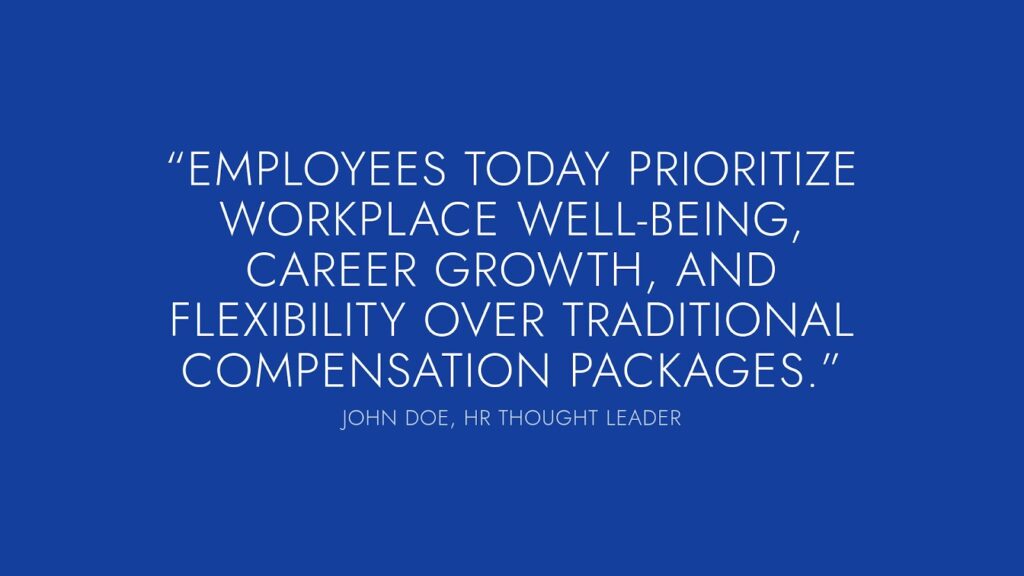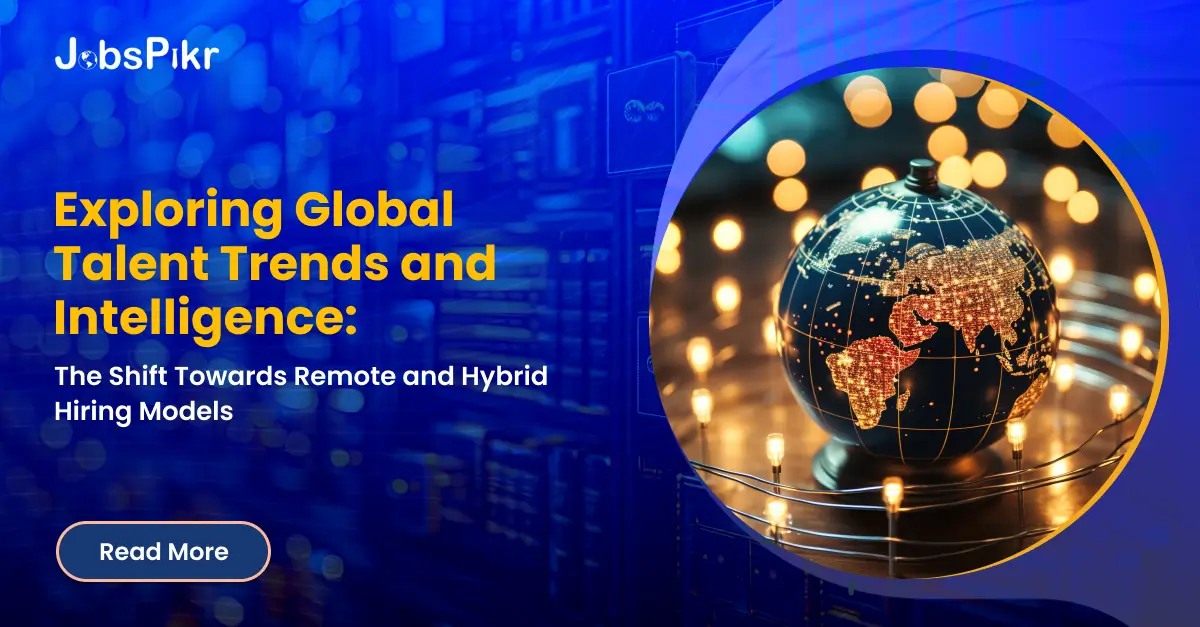In 2024, organizations worldwide are navigating a complex, evolving talent landscape shaped by new workforce expectations and technological innovations. This dynamic environment is causing a significant shift in recruitment strategies and HR practices, with talent trends like remote work, hybrid hiring models, and workforce diversity rising to the forefront. Businesses are leveraging talent intelligence platforms to stay competitive, gaining data-driven insights into the labor market and reshaping HR priorities. This blog explores the most impactful global talent trends and examines the growing importance of talent intelligence for enhancing workforce planning.
1. Most Significant Talent Trends Impacting Recruitment in 2024
The recruitment landscape in 2024 is being transformed by several key current talent trends. As organizations face a changing economic environment, they are rethinking how they attract, manage, and retain talent. Let’s explore the major trends driving these changes:
The Rise of Remote and Hybrid Work Models
With flexible work models becoming mainstream, more companies are shifting towards remote-first or hybrid structures. This has expanded the talent pool across borders and time zones, enabling businesses to access a more diverse workforce.

A Focus on Workforce Diversity and Inclusion
Diversity, equity, and inclusion (DEI) remain critical priorities. Global businesses are implementing robust hiring frameworks to attract talent from underrepresented groups, ensuring greater innovation and representation within their workforce.
The Demand for Specialized Skills and Agile Talent
The nature of work is changing, leading to increased demand for specialized skills, including technology, data analytics, and digital marketing. Companies are also adopting more agile hiring models to manage fluctuating demands.

Growing Employee Expectations for Well-being and Career Development
Candidates now prioritize workplace well-being, career growth, and flexibility. As a result, organizations are reshaping benefits packages and implementing career development programs to meet these evolving expectations.
These global talent trends are not just reshaping recruitment practices—they’re pushing HR leaders to adopt innovative tools and platforms to remain agile.
2. The Role of Talent Intelligence: Staying Ahead of Current Talent Trends
As these shifts occur, talent intelligence is becoming a cornerstone of modern HR strategies. This data-driven approach helps businesses predict labor market changes, identify talent gaps, and enhance decision-making.
What is Talent Intelligence?
Talent intelligence refers to the process of using real-time data and analytics to guide talent acquisition, workforce planning, and employee retention. By leveraging data from both internal sources (such as employee performance metrics) and external sources (such as job market trends), businesses can make more informed hiring decisions.
How Talent Intelligence Platforms are Transforming HR Practices
Organizations are adopting talent intelligence platforms to track and analyze key current talent trends. These platforms provide actionable insights that allow HR teams to:
- Identify talent gaps and align hiring strategies accordingly.
- Assess labor market conditions to attract the right talent, even in competitive industries.
- Forecast future skill requirements based on industry trends and technological advancements.
- Benchmark salaries to ensure competitive compensation structures.
With these insights, companies can build more resilient recruitment strategies and stay ahead in the rapidly changing global talent landscape.
3. Global Talent Trends Redefining HR Priorities
The acceleration of global talent trends has led to a shift in HR priorities, forcing companies to rethink their hiring strategies.
Let’s examine some of the most prominent trends in greater detail:
Remote and Hybrid Hiring Models: The New Norm
The transition to remote and hybrid work structures is perhaps the most transformative trend of 2024. What started as a pandemic-era necessity has evolved into a strategic advantage for businesses, allowing them to:
- Tap into global talent pools without geographic constraints.
- Increase employee satisfaction by offering flexible work options.
- Reduce overhead costs by downsizing physical office spaces.
This trend has prompted businesses to revise their talent acquisition strategies. Remote hiring has become a competitive advantage, particularly in regions where in-demand skills are scarce.
Skills-Based Hiring and Continuous Upskilling
Traditional hiring models that emphasize degrees and formal qualifications are being replaced by skills-based hiring. Organizations are increasingly seeking candidates with demonstrable skills and experience. Furthermore, continuous learning and upskilling initiatives are being integrated into HR strategies to close internal skills gaps.
Diversity, Equity, and Inclusion: A Business Imperative
Another key global talent trend is the growing importance of DEI initiatives. Companies are realizing that building diverse teams isn’t just a compliance requirement—it also drives innovation and better decision-making. This trend has encouraged HR leaders to adopt blind hiring practices and establish inclusive workplace policies.
AI and Automation in Talent Acquisition
Artificial intelligence (AI) is playing a major role in streamlining recruitment processes. From automated resume screening to predictive analytics for workforce planning, AI tools are helping companies enhance efficiency while reducing unconscious bias in hiring.
4. The Growing Shift Towards Remote and Hybrid Hiring Models
As the business landscape becomes increasingly global, remote and hybrid hiring models are gaining traction across industries. Companies that adopt these models experience several benefits, including access to a broader talent pool and greater flexibility in scaling their workforce.
Why Remote and Hybrid Hiring Models Are Becoming a Priority?
- Access to Global Talent: Companies can recruit talent from around the world, overcoming local talent shortages.
- Increased Employee Satisfaction: Remote work improves work-life balance, enhancing employee engagement and retention.
- Cost Savings: Reducing the need for large office spaces helps organizations cut costs without sacrificing productivity.
- Environmental Sustainability: Hybrid work models contribute to lower carbon footprints by reducing commuting.
Impact on Talent Acquisition Strategies
Adopting remote and hybrid models requires HR leaders to rethink their talent acquisition strategies. Recruitment processes must now account for remote onboarding, virtual interviews, and online assessments. Furthermore, businesses need to invest in technologies that support collaboration and productivity across distributed teams.
These trends underscore the importance of using talent intelligence platforms to monitor employee engagement and performance in remote settings, ensuring that business objectives are met.
5. Practical Ways for HR Leaders to Incorporate Talent Intelligence into Workforce Planning
Given the rapid pace of change in the labor market, incorporating talent intelligence into workforce planning has become essential. Here are some practical strategies for HR leaders to leverage talent intelligence platforms effectively:
Conduct Predictive Workforce Planning:
Use predictive analytics to anticipate future workforce needs. By analyzing historical data, companies can forecast talent shortages, plan for skill requirements, and develop long-term hiring strategies.
Monitor Competitor Talent Strategies:
Talent intelligence platforms allow businesses to benchmark their recruitment efforts against competitors. HR leaders can track competitor hiring trends, compensation structures, and skill demands to stay ahead in the talent race.
Align Talent Acquisition with Business Objectives:
By integrating talent intelligence with business strategies, HR teams can ensure that recruitment efforts align with organizational goals. This includes identifying roles that are critical to business success and prioritizing their fulfillment.
Improve Employee Retention through Talent Insights:
Retaining top talent is just as important as attracting new hires. Talent intelligence platforms provide insights into employee engagement levels, identifying potential attrition risks. This enables HR leaders to take proactive measures to improve retention.
Optimize Recruitment Processes with Data-Driven Decision-Making:
Data from talent intelligence platforms can be used to optimize recruitment workflows, from sourcing candidates to onboarding. By tracking key performance indicators (KPIs) such as time-to-hire and offer acceptance rates, HR teams can continuously improve their processes.

Conclusion:
In 2024, businesses must stay ahead of talent trends to remain competitive. Remote and hybrid work models are reshaping the talent landscape, while the growing emphasis on specialized skills, diversity, and employee well-being is redefining HR priorities. To succeed in this environment, organizations need to leverage the power of talent intelligence platforms to guide their recruitment and workforce planning efforts.
By embracing data-driven insights, HR leaders can align their strategies with current talent trends, ensuring they attract, engage, and retain the best talent. Incorporating talent intelligence into every stage of the employee lifecycle will be crucial for businesses aiming to thrive in the fast-evolving global marketplace.
The strategic integration of talent intelligence with emerging global talent trends positions companies for success, enabling them to build future-ready workforces. As remote and hybrid hiring models become the norm, HR leaders must remain agile and adaptive, ensuring that they capitalize on these trends to meet both short-term and long-term goals. Sign-up with JobsPikr now and start exploring the insights.



